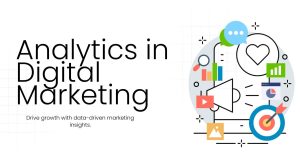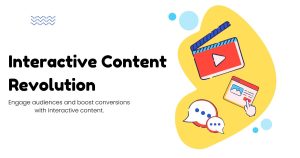Micro-Emotion Mapping: The Hidden Key to 3-Second Marketing Wins

The human brain processes emotional information in microseconds, making split-second decisions about engagement before conscious thought even begins. Modern marketers are discovering that success lies not in broad emotional appeals, but in precisely mapping these fleeting micro-emotions that determine whether someone stops scrolling or keeps moving past your content.
Traditional marketing focuses on obvious emotions like happiness, fear, or excitement. Micro emotion mapping dives deeper into the subtle emotional nuances that trigger immediate behavioral responses. These tiny emotional signals often make the difference between viral content and complete obscurity.
Understanding the Science of Micro-Emotions
Micro emotions occur in the first 200 milliseconds of exposure to any stimulus. During this brief window, the brain categorizes information as either worth attention or dismissible. Marketing content that aligns with these instant emotional assessments captures attention before rational evaluation begins.
Neuroscience research reveals that people experience dozens of micro-emotions within a single second of viewing content. Curiosity might blend with mild anxiety, creating a unique emotional cocktail that drives engagement. Successful marketers learn to identify and trigger these specific combinations.
The facial coding technology used in advanced market research can detect micro-expressions that last less than a quarter of a second. These brief facial movements reveal true emotional responses that people often don’t consciously recognize themselves.
Eye-tracking studies show that emotional content attracts visual attention within 150 milliseconds. The brain identifies emotional relevance faster than it processes text or logical information, making emotional precision crucial for immediate engagement.
Micro-emotions operate below the threshold of conscious awareness but significantly influence behavior. Someone might feel compelled to click on content without understanding exactly why, driven by micro-emotional triggers that bypass rational decision-making processes.
The Anatomy of Three-Second Marketing Success
The first second establishes emotional relevance through visual and contextual cues that either resonate with the viewer’s current emotional state or create compelling emotional contrast. Successful content matches or intentionally disrupts the viewer’s micro-emotional baseline.
Second two involves emotional amplification where initial micro-emotions either intensify toward engagement or fade toward dismissal. Content that builds on initial emotional responses maintains attention, while content that conflicts with micro-emotional expectations loses viewers rapidly.
The third second represents the commitment threshold where micro-emotions crystallize into conscious engagement decisions. Viewers either commit to continued attention or definitively move on to other content.
Timing becomes critical because micro-emotions shift constantly throughout this three-second window. Content that triggers positive micro-emotions in the first second but fails to maintain them often performs worse than content with consistent moderate emotional appeal.
Mapping Emotional Triggers Across Demographics
Different demographic groups exhibit distinct micro-emotional patterns that smart marketers can identify and leverage. Age significantly influences which micro-emotions drive engagement, with younger audiences responding to different emotional triggers than older demographics.
Cultural background shapes micro-emotional responses in subtle but measurable ways. Content that triggers positive micro-emotions in one cultural context might generate neutral or negative responses in another, requiring careful emotional calibration for different markets.
Professional context influences micro-emotional receptivity throughout the day. Business professionals during work hours respond to different emotional triggers than the same individuals during personal time, requiring time-sensitive emotional targeting.
Gender differences in micro-emotional processing affect content engagement patterns, though individual variation often exceeds gender-based generalizations. Successful marketers focus on emotional patterns rather than demographic assumptions.
Economic circumstances influence micro-emotional responses to marketing content. People experiencing financial stress exhibit different micro-emotional patterns than those feeling financially secure, affecting their receptivity to various marketing approaches.
Advanced Techniques for Micro-Emotion Detection
Biometric feedback provides real-time micro-emotion data that traditional surveys cannot capture. Heart rate variability, skin conductance, and pupil dilation reveal micro-emotional responses that occur before conscious awareness.
Social media sentiment analysis at scale reveals micro-emotional patterns across large populations. Advanced algorithms can detect subtle emotional shifts in language use that indicate changing micro-emotional baselines within target audiences.
A/B testing with micro-second precision timing reveals which emotional triggers work best for specific audiences. These tests measure engagement within the critical three-second window rather than longer-term metrics that might obscure micro-emotional effects.
Machine learning algorithms trained on micro-emotional data can predict content performance before publication. These systems identify emotional patterns that correlate with high engagement rates and suggest optimizations for maximum micro-emotional impact.
Facial recognition technology in digital advertising platforms enables real-time micro-emotion detection, allowing dynamic content adjustment based on immediate emotional responses. This technology remains controversial but demonstrates the potential precision of micro-emotional targeting.
For comprehensive insights into emotional marketing strategies and their practical applications, Emotionalmarketo provides detailed analysis of micro-emotion mapping techniques and implementation strategies.
Building Micro-Emotional Content Strategies
Content creators must understand the micro-emotional journey their audience experiences throughout a typical day. Morning micro-emotions differ significantly from afternoon or evening patterns, requiring time-specific content strategies that align with natural emotional rhythms.
Visual elements trigger micro-emotions faster than text, making image selection crucial for three-second marketing success. Colors, facial expressions, and compositional elements each contribute to the micro-emotional cocktail that determines initial engagement.
Headline construction influences micro-emotional responses through word choice, rhythm, and emotional implication. Successful headlines trigger curiosity micro-emotions while avoiding negative micro-emotions like skepticism or overwhelm.
Video content offers unique opportunities for micro-emotional manipulation through rapid visual and auditory changes. The first few frames of video content often determine whether viewers continue watching, making micro-emotional precision essential.
Interactive elements can extend the three-second engagement window by triggering continuous micro-emotional responses. Polls, quizzes, and clickable elements maintain emotional engagement beyond the initial three-second threshold.
Measuring Micro-Emotional Campaign Performance
Traditional engagement metrics often miss the micro-emotional dynamics that drive success or failure. Marketers need specialized measurement approaches that capture emotional responses within the critical three-second window.
Heat mapping technology reveals where micro-emotional engagement occurs within content layouts. Areas that generate strong micro-emotional responses attract more visual attention and drive higher engagement rates.
Time-to-engagement metrics measure how quickly content triggers emotional responses. Content that engages viewers within the first second typically outperforms content that requires longer emotional processing time.
Emotional sentiment tracking throughout the customer journey reveals how micro-emotions influence purchasing decisions. Understanding these emotional patterns helps optimize the entire marketing funnel for micro-emotional effectiveness.
Bounce rate analysis with micro-second granularity identifies exactly when content loses emotional relevance. This data helps refine micro-emotional targeting to maintain engagement throughout the three-second critical period.
Ethical Considerations in Micro-Emotional Marketing
The power to manipulate micro-emotions raises important ethical questions about consent and manipulation. Marketers must balance effectiveness with respect for audience autonomy and emotional well-being.
Transparency becomes complex when marketing operates below conscious awareness. Consumers cannot consent to micro-emotional manipulation they don’t consciously experience, creating ethical gray areas that the industry must address.
Vulnerable populations require special consideration in micro-emotional marketing. Children, elderly individuals, and people experiencing mental health challenges may be particularly susceptible to micro-emotional manipulation techniques.
Long-term emotional impact of micro-emotional marketing remains largely unstudied. The cumulative effect of constant micro-emotional targeting could influence psychological well-being in ways that aren’t immediately apparent.
Future Evolution of Micro-Emotional Marketing
Artificial intelligence will enable real-time micro-emotional adaptation that adjusts content based on immediate emotional responses. This technology could create perfectly personalized emotional experiences for each individual viewer.
Augmented reality platforms offer new opportunities for micro-emotional engagement through immersive experiences that trigger multiple emotional responses simultaneously. These platforms could revolutionize how marketers approach micro-emotional targeting.
Predictive micro-emotional modeling will allow marketers to anticipate emotional states before they occur, enabling proactive content strategies that align with predicted micro-emotional patterns.
Integration with smart home devices could provide continuous micro-emotional feedback that informs marketing strategies based on real-world emotional patterns rather than digital behavior alone.
Implementing Micro-Emotional Strategies
Success in micro emotional marketing requires systematic testing and refinement rather than relying on intuition about emotional responses. Data-driven approaches consistently outperform emotional assumptions in three-second marketing scenarios.
Cross-platform consistency becomes crucial when targeting micro-emotions across different media channels. Emotional triggers that work on social media might not translate effectively to email marketing or display advertising.
Team training in micro-emotional awareness helps entire marketing organizations recognize and leverage these subtle emotional dynamics. Understanding micro-emotions becomes a core competency for modern marketing professionals.
The future of marketing lies in understanding and leveraging the split-second emotional decisions that determine engagement. Micro-emotion mapping provides the precision needed to succeed in an attention economy where three seconds can make or break a campaign.





